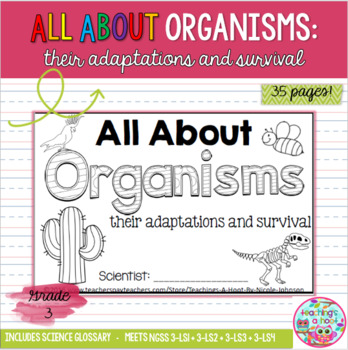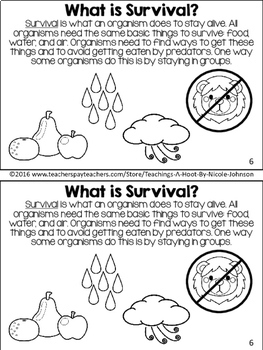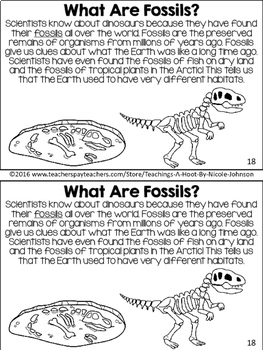All About Organisms NGSS mini-book
- PDF
Description
This 35-page science mini-book was created to help teach the Next Generation Science Standards for 3rd grade Life Science: 3-LS1 (From Molecules to Organisms), 3-LS2 (Ecosystems), 3-LS3 (Heredity), and 3-LS4 (Biological Evolution).
It covers the following principles: what is an organism, what is a life cycle, animal & plant life cycles, what is survival, safety in numbers, what is a habitat, what are adaptations, what is natural selection, what does endangered & extinct mean, what are fossils, what can fossils tell us, what is evolution, what is survival of the fittest, plant & animal survival, design a solution, what are inherited traits, how the environment effects traits.
I made sure to cover everything required in the NGSS for this topic and tried my best to make the material 3rd grade friendly!
Worksheets in the booklet allow students to: draw a life cycle, match animals to their collective group names, sort animals into their habitats, label fossils, label plant & animal adaptations, design a solution to an environmental problem effecting organisms, and draw a self-portrait with their inherited traits. A science glossary of important terms is also included.
This document is in a half-page format (two to a page) to save paper and make copying class sets quicker and easier. Enjoy! =)
Be sure to check out the other NGSS mini-books in my store. More NGSS products are in the works for other grades!





